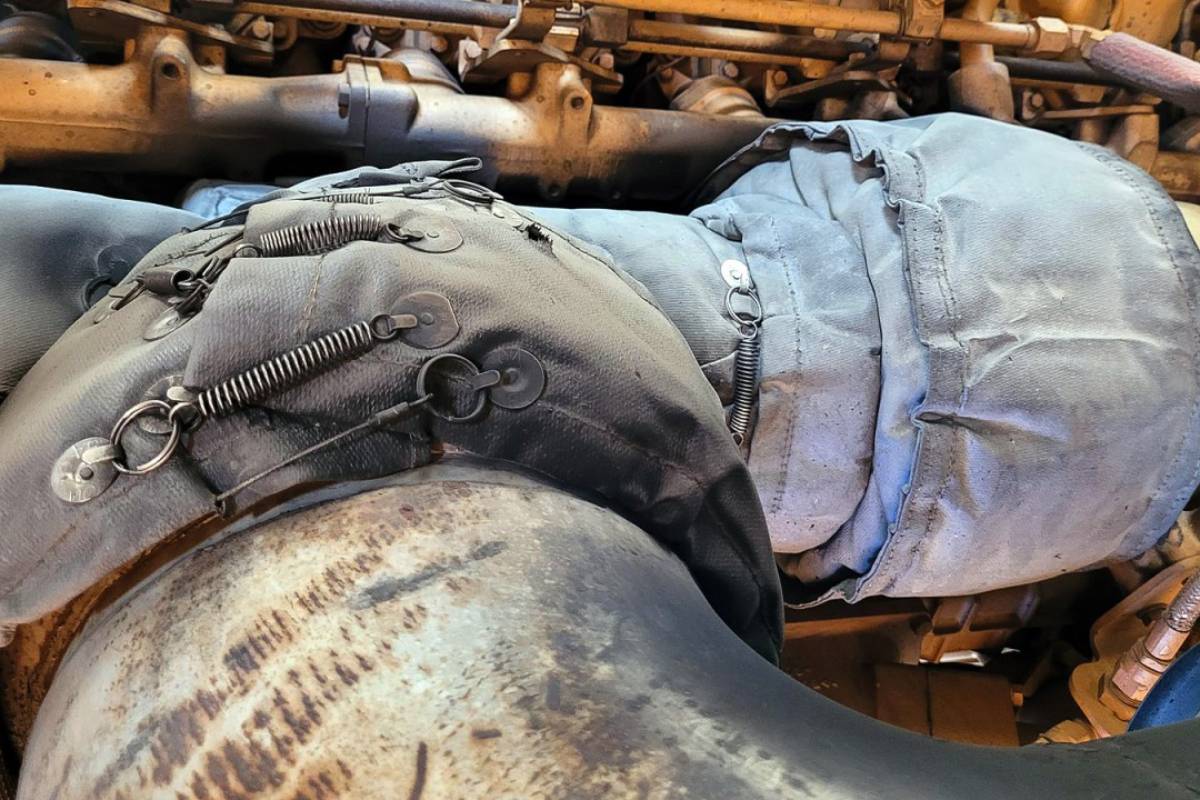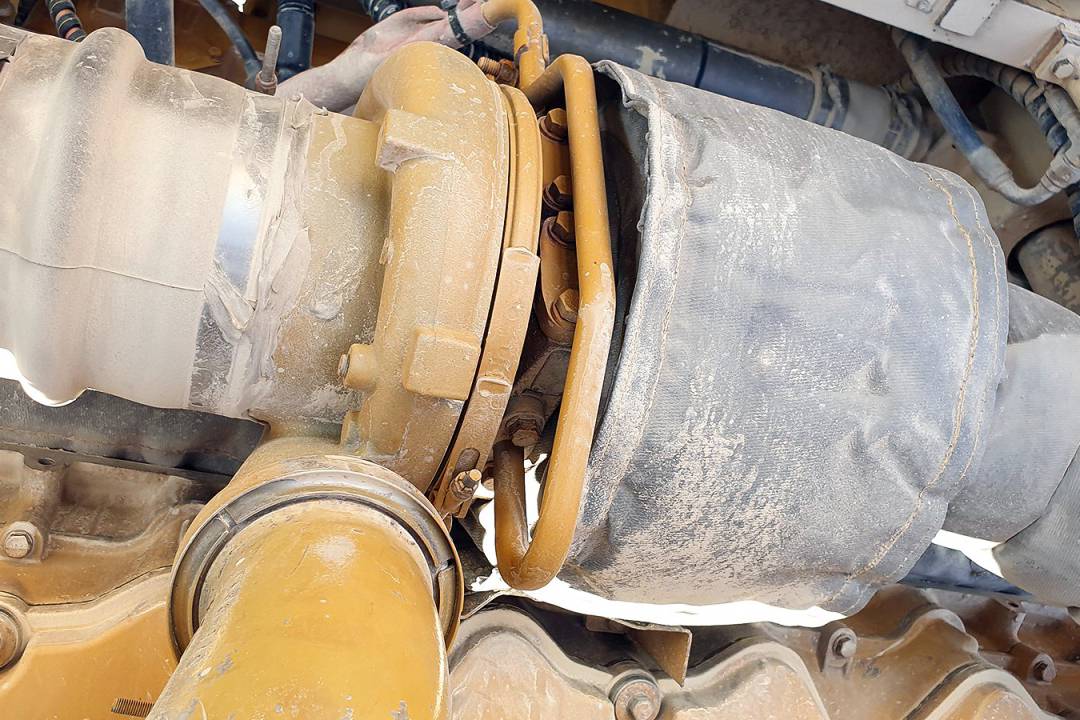What does heat do to heavy machinery? How to reduce heat in heavy machinery with thermal blanket? How to install it? Click here to learn more
Aftermarket exhaust systems can significantly impact heavy machinery in several ways. Firstly, they often lead to increased performance by optimizing exhaust flow, reducing backpressure, and enhancing engine breathing. This improved efficiency can result in higher horsepower and torque outputs, allowing machinery to operate more effectively and efficiently.
Additionally, aftermarket exhaust systems can alter the sound profile of heavy machinery, creating a more aggressive or refined tone depending on the preferences of the operator or the requirements of the application. This aesthetic enhancement can contribute to the overall experience of operating the machinery and may even improve safety by making the presence of the machinery more noticeable in noisy or busy environments.
However, one of the key considerations with aftermarket exhaust systems is the management of heat. These upgrades can generate higher temperatures within the engine compartment, potentially leading to overheating or damage to surrounding components if not properly addressed. Therefore, effective heat management solutions, such as thermal blankets or heat shields, are often necessary to mitigate these risks and ensure the continued reliability and performance of the heavy machinery.
What does heat do to heavy machinery?
Heat can exert a range of detrimental effects on heavy machinery, compromising its performance and durability. One of the most immediate concerns is overheating, which can lead to a cascade of issues. When heavy machinery operates beyond its optimal temperature range, components such as the engine, transmission, and hydraulic systems are at risk of damage. Overheating can cause engine seizures, fluid degradation, and accelerated wear on vital components, ultimately resulting in costly repairs and downtime.
Furthermore, elevated temperatures can impair the efficiency of heavy machinery. Excessive heat interferes with the combustion process, diminishing power output and fuel efficiency. Cooling systems may struggle to dissipate heat effectively, exacerbating the problem and impeding the machinery’s ability to perform tasks efficiently. As a result, operators may experience decreased productivity and increased operational costs.

The long-term effects of heat on heavy machinery are equally concerning. Continuous exposure to high temperatures can accelerate the degradation of materials and components. Engine components may warp, hoses and seals may crack, and electrical wiring may deteriorate, compromising the overall reliability and safety of the machinery. Left unchecked, heat-related degradation can lead to premature failure of critical components, necessitating extensive repairs and replacements.
Safety considerations cannot be overlooked when discussing the impact of heat on heavy machinery. Elevated temperatures increase the risk of fires and explosions, particularly in machinery handling flammable materials or operating in hazardous environments. Operators may also face discomfort and fatigue due to the heat, potentially compromising their ability to operate the machinery safely and efficiently.
Environmental concerns further underscore the importance of effective heat management in heavy machinery. Heat emissions from machinery contribute to environmental pollution, with higher operating temperatures leading to increased emissions of nitrogen oxides (NOx) and particulate matter. Poor air quality not only poses health risks to workers but also has broader ecological implications, impacting ecosystems and contributing to climate change.
How to reduce heat in heavy machinery with thermal insulation blankets?
Now that we’ve identified the formidable challenge of managing excess heat in heavy machinery equipped with aftermarket exhaust systems, let’s explore a powerful solution: thermal insulation blankets. These innovative accessories act as a shield against the relentless onslaught of heat, offering a protective barrier for critical engine components and surrounding infrastructure.
What are thermal insulation blankets?
Thermal insulation blankets are meticulously engineered to withstand the extreme temperatures generated by high-performance exhaust systems. Constructed from advanced materials such as fibreglass, ceramic fibres, or silicone-coated fabrics, these blankets possess exceptional heat resistance properties, making them ideal for heavy-duty applications.

How they work?
Thermal insulation blankets are like cosy jackets for your exhaust system. They wrap around it tightly and keep the heat inside, so it doesn’t bother the other parts nearby. This makes the engine bay cooler and safer for your precious equipment.
Benefits of thermal insulation blankets
- Temperature Regulation: If you want to keep your engine bay cool and comfy, thermal insulation blankets are the way to go. They can handle the hot stuff from your upgraded exhaust systems and stop them from messing up your machine. With these blankets, you can enjoy smooth and steady performance no matter how hard you push your ride.
- Enhanced Durability: Thermal blankets are great for keeping your heavy machinery in good shape. They protect the important parts of the engine from getting too hot and wearing out faster. This way, you can save money and hassle by avoiding unnecessary fixes or changes later on.
- Improved Safety: Heat-related failures pose a significant safety risk in heavy machinery operations. Thermal blankets provide an added layer of protection against such hazards, minimizing the likelihood of electrical shorts, fluid leaks, or catastrophic malfunctions caused by overheating. This not only safeguards personnel and equipment but also promotes a secure work environment.
- Noise Reduction: Some blankets do more than just keep things warm. They also lower the volume of loud exhaust pipes, making the workplace quieter and safer for the ears. These blankets are great for places with a lot of machines and strict noise rules.
How to install a thermal insulation blanket?
Now that we understand the importance of managing heat generated by heavy machinery equipped with aftermarket exhaust systems. Now we are going to move on to another important aspect, installation and compatibility of thermal blankets.
Installing thermal blankets on heavy machinery requires careful consideration of compatibility and proper fitting. Unlike standard automotive applications, heavy machinery often presents unique challenges due to its size, configuration, and operating conditions. Here’s a simplified guide to ensure a successful installation:

- Assess Compatibility: Before purchasing thermal insulation blankets, ensure they are compatible with your specific make and model of heavy machinery. Consider factors such as exhaust pipe diameter, length, and curvature to select the appropriate size and shape of blankets.
- Prepare the Surface: Thoroughly clean the surface of the exhaust system where the blankets will be installed. Remove any dirt, grease, or debris that could hinder adhesion or cause damage over time.
- Apply Adhesive (if necessary): Some thermal insulation blankets come with adhesive backing for easy installation. Follow the manufacturer’s instructions to apply the adhesive evenly to the surface of the exhaust system before positioning the blankets.
- Wrap the Exhaust System: Carefully wrap the thermal insulation blankets around the exhaust pipes, ensuring full coverage and a snug fit. Use fasteners or straps provided with the blankets to secure them in place and prevent shifting during operation.
- Seal the Edges: Pay close attention to sealing the edges of the blankets to prevent heat from escaping and ensure maximum effectiveness. Use high-temperature-resistant tape or sealant to secure the edges and create a tight seal.
- Test for Proper Fit: After installation, conduct a thorough inspection to ensure the blankets are securely attached and cover the intended areas of the exhaust system. Start the machinery and monitor for any signs of overheating or exhaust leaks, adjusting the blankets if necessary.
- Monitor Performance: Regularly inspect the thermal insulation blankets for signs of wear, damage, or deterioration. Replace any blankets that show signs of degradation to maintain optimal heat management and protect surrounding components.
You don’t want your machines to overheat, right? That’s why you need to follow these steps when you install your new exhaust systems. And don’t forget to check how they’re doing from time to time. This way, you can keep your machines cool and happy, and they’ll last longer and work better. Sounds good, right?
The key takeaway
If you want to boost the performance and durability of your heavy machinery, you need to manage heat effectively. Excessive heat from aftermarket exhaust systems can damage nearby engine parts if you don’t take preventive measures.
One of the best ways to prevent heat damage is to use thermal insulation blankets on your exhaust system. These blankets act as shields, trapping and dispersing heat to keep your machinery at the ideal temperature and protect critical engine parts.
Make sure you choose blankets that fit your machinery and install them correctly. You also need to check and maintain them regularly for the best results.
Find out more about thermal insulation blanket solutions from reputable manufacturers and take action to protect your heavy machinery from heat damage. By doing this, you can enhance performance and ensure the longevity of your equipment.
